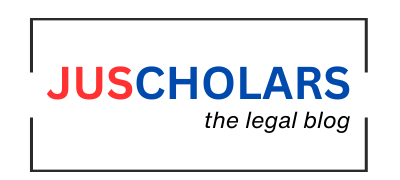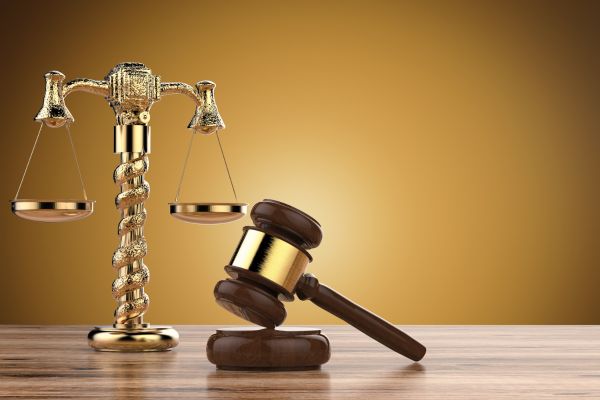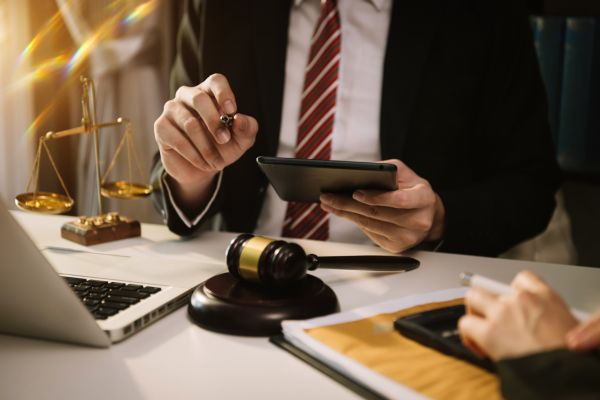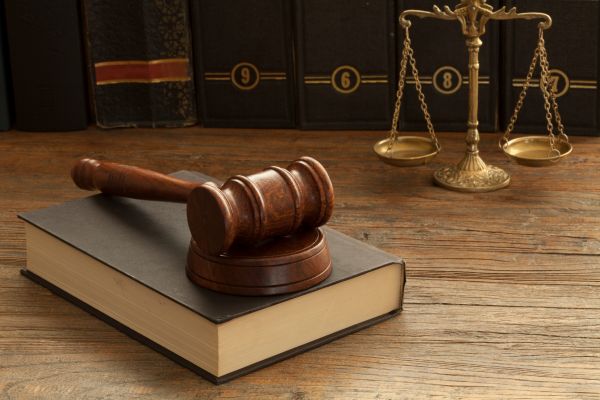In an age of swift technological breakthroughs and advancements, computers, the Internet, software, AI creations, and the emerging metaverse can solely be safeguarded within the domain of Intellectual Property. This article will be decoding and decrypting basics of software, its relationship with Intellectual Property (IP) and the recent trends within the purview of the Indian Courts.
Software Categorization in the Context of IP Law
Knowledge is an essential component, and innovation is crucial for sustaining this economy[1]. The capacity to transform knowledge into prosperity and social benefits through innovation will shape the country’s future. Consequently, following the implementation of the Trade Related Intellectual Property Rights (TRIPS) Agreement, matters concerning the creation, assessment, safeguarding, enforcement, defense, and utilization of intellectual property (IP) have gained significant importance globally.
“The rapid expansion of scientific understanding, rising needs for innovative intellectual property protection, access to information related to IP, the growing prevalence of the new knowledge economy compared to the traditional ‘brick and mortar’ economy, and the complexities associated with IP in traditional and community knowledge are creating challenges for establishing a new intellectual property agenda for the 21st century”[2].
The primary question for any IP enthusiast is whether software can be protected even before understanding the nuances of the software. However, to understand this, we must first know the various types of software that foster advancement in technology. Software can be categorized into various types, such as “commercial, shareware, freeware, and public domain software, and it can be safeguarded by different laws based on its industrial use”[3].
Commercial software is safeguarded by copyright and users must purchase the software. Shareware programmes are offered at lower prices. This software can be used for free testing and trials. Freeware programs can be used without cost and copied freely. For commercial, shareware, and freeware software, no one is allowed to alter the software code or utilize it in another program without authorization from the copyright owner. Software in the public domain is copyright free and can be utilized without limitations.
This can be replicated and utilized in different programs. Software is generally linked to mathematical techniques and algorithms and can be divided into categories such as software for specific hardware, systems software, and application software. Traditionally, software can be safeguarded as copyright; however, with industry expansion and advanced applications, it may also be protected under the patent system. The boundary between copyright and patents is quite subtle in the case of software and computer-implemented inventions.
The ‘per se’ Debate and Judicial Precedents
Computer-related interventions and software patentability remain the subject of extensive debate in India. Recently, there has been a surge in the number of applications for software patents globally; however, granting such patents in India has been viewed as a deviation from the general norm established by the Patent Act of 1970[4]. Section 3(k)[5] explicitly bars the patentability of “computer programs per se” and “algorithms”.
The phrase “per se” was incorporated in 2022, based on the recommendation of the Joint Committee Report on the Patents (Second Amendment) Bill, 1999[6]. This amendment applies explicitly to standalone computer programs and not to those that incorporate additional elements, such as hardware. However, Indian Courts have made efforts to foster innovation and advancement in technology by judiciously interpreting this section.
Recently, the Hon’ble Delhi High Court has interpreted the scope and applicability of this section. In the case of Ferid Allani, v. Union of India[7], the Hon’ble Court elucidated that section 3(k) does not preclude the patentability of software in its entirety, as it does not apply to every computer-based invention.
Furthermore, the Court observed that explicit prohibition would hinder technological development and acknowledged the significance of excelling in artificial intelligence (AI), blockchain, and other related fields. It was clearly established that software must demonstrate a “technical effect” and “technical advancement” to qualify for patent protection or that software must address technical issues. The Court substantiated this by referring to the Draft guidelines for Examination of Computer-Related Inventions (CRI) 2013, as it specifically laid down that any invention that offers a technical solution to a specific problem such as improvement in user interface, which shall constitute a “technical effect.”
Although the subsequent guidelines did not shed light on this issue, judicial precedents have solidified the suggestion of the 2013 guidelines and enabled its applicability to software and computer program applications.
Similarly, the Delhi High Court in Microsoft Technology Licensing, LLC v The Assistant Controller of Patents and Designs reiterated that a CRI cannot be denied a patent solely on the grounds of being an algorithm or a set of algorithms or instructions[8]. Instead, they must provide technical advancements and real-world applications. Additionally, the Court recommended that the Patent Office/Controller General of Patents, Designs, and Trademarks (CGPDTM) take references from the European Patent Office (EPO) and the United States Patent and Trademark Office (USPTO) to establish clear assessment criteria for CRIs.
Furthermore, the Court invalidated the requirement of hardware component in software patent emphasizing on the revised guidelines of 2017, which removed the requirement of “novel hardware” and laid a greater emphasis on “technical effect” and “technical advancement”[9]. This view was upheld in the case of Raytheon Company v. The controller of Patents and Designs, relying on Ferid Allani and Microsoft Technology, invalidates the requirement of “novel hardware” provided that it meets the requirements of technical effect and technical advancement[10].
Conclusion
The legal framework for software protection in India is evolving, balancing legal limitations with judicial precedents to encourage technological progress. Although Section 3(k) of the Patents Act, 1970, prohibits the patentability of “computer programs per se,” Indian courts have gradually taken a more nuanced stance, acknowledging the significance of “technical effect” and “technical advancement” in inventions related to software.
Judicial precedents such as Ferid Allani v. Union of India, Microsoft Technology Licensing, LLC, v. Assistant Controller of Patents and Designs and Raytheon Company, v. The Controller of Patents and Designs has undeniably influenced India’s position on software patents. These decisions highlight that simple algorithms or computer applications cannot be patented; yet, software that delivers real technological advancements may receive protection.
The transition from demanding “novel hardware” to emphasizing “technical effect” aligns India’s strategy with global standards, such as those set by the European Patent Office (EPO) and the United States Patent and Trademark Office (USPTO). The future of software patent eligibility in India will probably be shaped by ongoing judicial examinations, legislative changes, and global standards, ensuring that intellectual property protection meets the requirements of a fast-changing digital economy.
References
- Pamela Samuelson, Symposium: Towards a Third Intellectual Property Paradigm: A Manifesto Concerning the Legal Protection of Computer Programs, 94 Colum. L. Rev. 2308 (1994), available at www.jstor.org/stable/10.2307/43953240.
- Marcus M. Dapp, Open Source + Software Patents = Innovation? Understanding Software Patent Policy’s Effects on Open Source Innovation, ECPR Conference “Frontiers of Regulation” (Bath, UK 2006), available at https://www.semanticscholar.org/paper/Open-Source-%2B-Software-Patents-%3D-Innovation-patent-Dapp-ETHZurich/0e1b2ea116ccee9862e447ce2a2d77f48a188ef7
- EC Proposal for Directive on Patentability of Computer-Implemented Inventions, European Commission Press Release Database (Brussels 2012, updated Jan. 24, 2017), available at http://ec.europa.eu/internal_market/indprop/comp/index_en.htm.
- IJCRT, Patent Protection for Software in India, IJCRT (2018), available at https://ijcrt.org/papers/IJCRT1802814.pdf.
- IndiaFilings, Software Patent Registration in India, IndiaFilings (n.d.), available at https://www.indiafilings.com/learn/software-patent-registration/.
[1] R. Sharma, R. Malviya & S. Sundram, Recent Trends in the Knowledge-Based Economy of Patents, in Pharma Marketing and Pharmacoeconomics 85, (Apple Acad. Press 2024).
[2] V. Kavida & N. Sivakoumar, Intellectual Property Rights—The New Wealth of Knowledge Economy: An Indian Perspective (2008).
[3] Matt, Lessons from a first-time insurance applicant, “Insurance IP Bulletin,” 2 (2005).
[4] The Patents Act, 1970, No. 39, Acts of Parliament, 1970 (India).
[5] The Patents Act, 1970, § 3(k), No. 39, Acts of Parliament, 1970 (India).
[6] Part 8, Joint Committee Report on the Patents (Second Amendment) Bill, 1999.
[7] 10 & 13, Ferid Allani v. Union of India, MANU/DE/4323/2019. Also refer, Enercon India Ltd. v. Aloys Wobben.
[8]45 Microsoft Technology Licensing, LLC v. The Assistant Controller of Patents and Designs, MANU/DE/3547/2023.
[9] 4 r/w6, ibid.
[10] 21, Raytheon Company v. Controller of Patents and Designs, MANU/DE/6290/2023.
Author: Lasya C R, Student Alliance School of Law at Bengaluru, India







